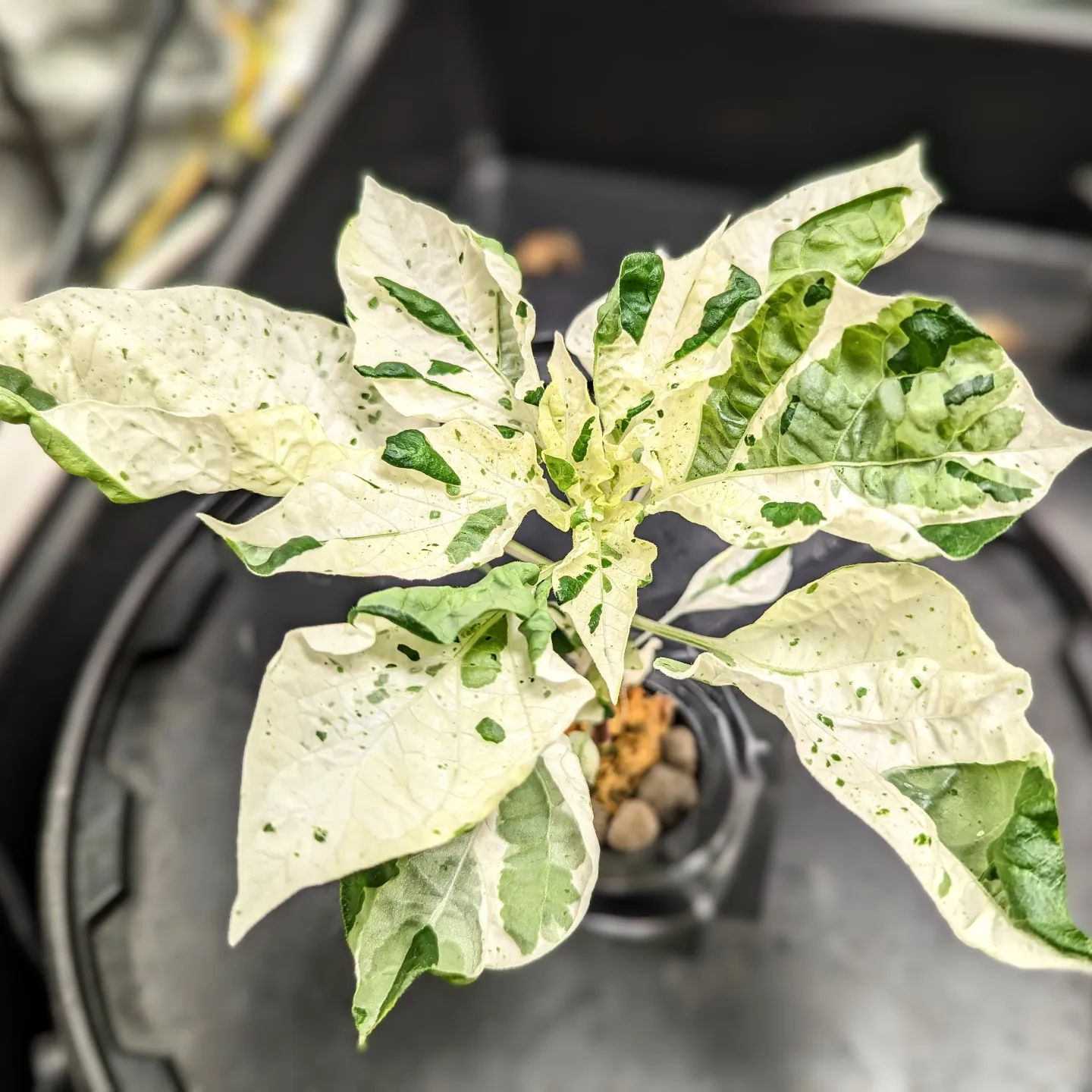
Origins and Heritage
Origins
The Variegated Sugar Rush Stripey was discovered by California based pepper grower Rolando Rolas Lemus. He noticed that one of the Sugar Rush Stripey plants he was growing in his Aerogarden in 2022 was a bit different from the others, and posted it on the Pepper Lovers Facebook page. I saw the post and immediately knew it was something special. I offered him a whole envelope of seeds from my website in exchange for a handful of his Variegated Sugar Rush Stripey seeds. Happily, he obliged!
Upon sowing more seeds, Rolando noted that the variegation exhibited was in fact genetically repeatable, and many of the seedlings showed signs of variegation. This would have been generation M2, the same generation of seeds I started in 2023.
Heritage
The Variegated Sugar Rush Stripey is a true Capsicum baccatum cultivar. It originated from a spontaneous mutation in the chlorophyll production pathway rather than through crossing with another variegated variety.
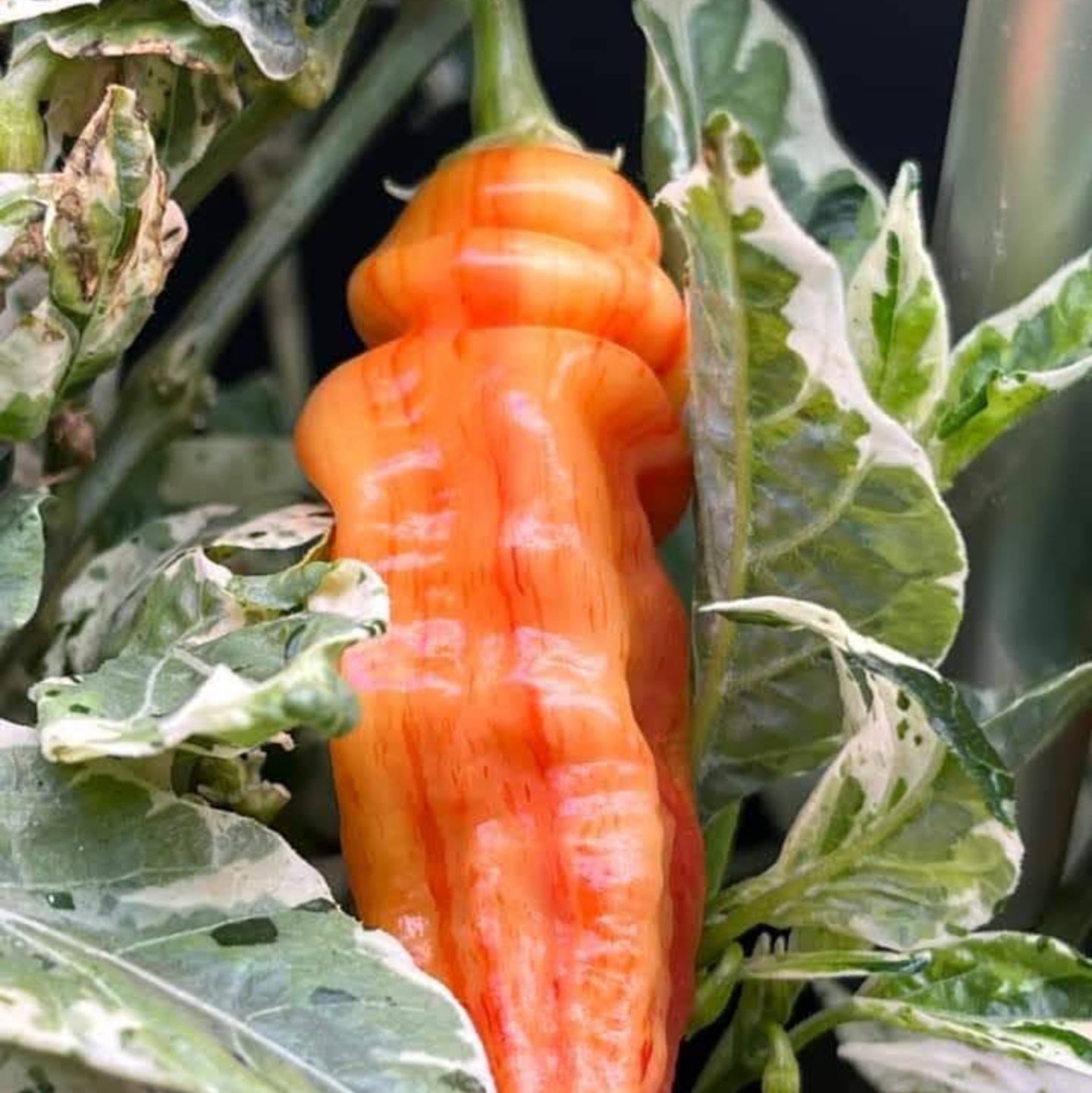
The original image of the Variegated Sugar Rush Stripey uploaded by Rolando Rolas Lemus in 2023

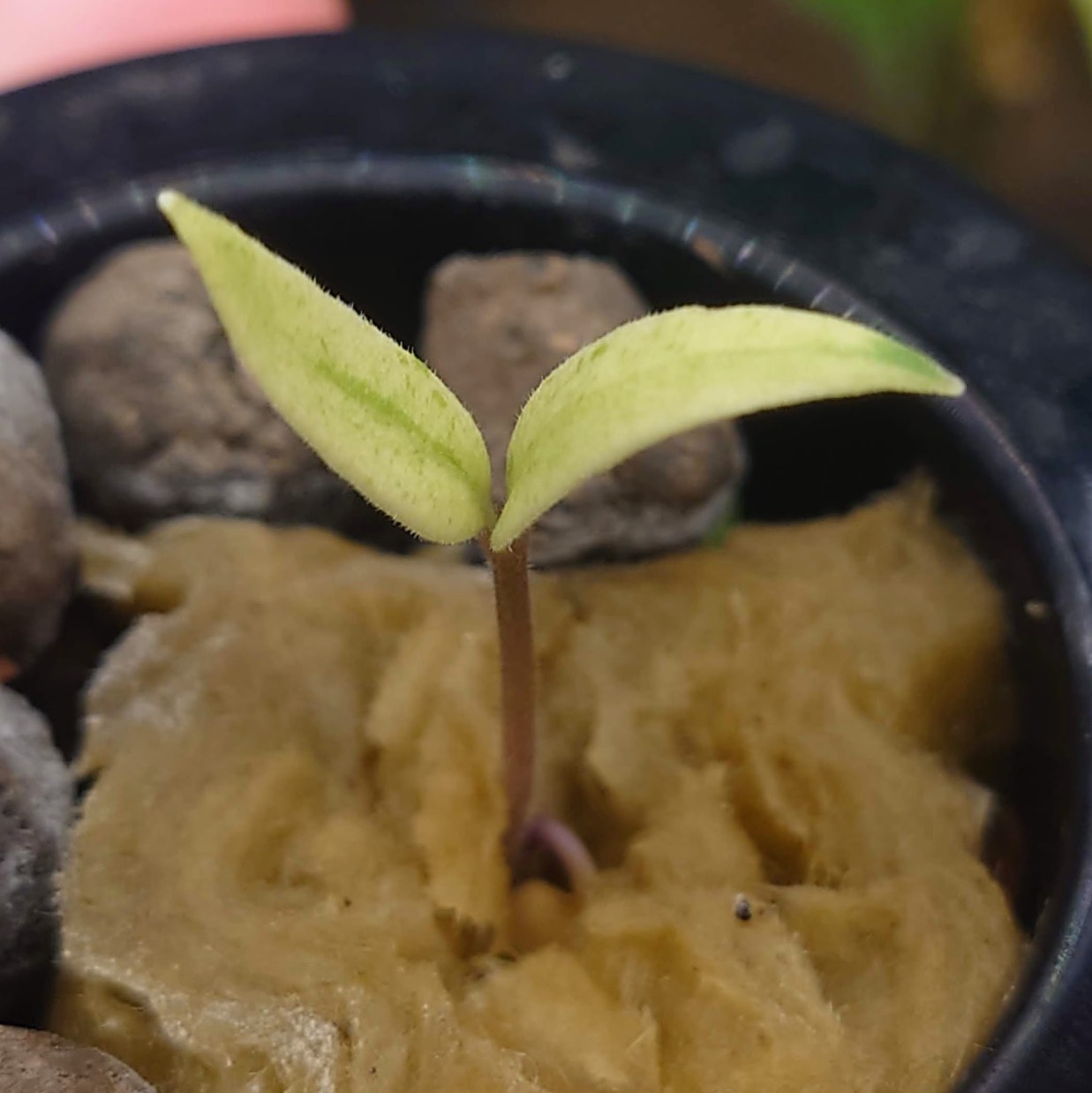
I sowed some seeds the very same day that they arrived. Here is the first image I captured of the first seed to emerge. As you might be able to tell, it was variegated. I had high hopes for the stability of this mutation.
Generation M2
I sowed several seeds for this generation, but ultimately kept two plants.
One of the plants unfortunately suffered from apical dominance by a completely green shoot, and what resulted was a plant with very little variegation. However, it did produce a single variegated branch late on in its life, and this was shown off in the Eating with Isotope special episode. A pod was harvested from this branch, and seeds were selected from it.
Genetic Defects at M2
The second M2 plant was not so lucky. Although it looked absolutely beautiful and was visually perfect for my vision, it suffered a terrible fate.
It was unable to produce flower buds. Plenty of Y splits later, I gave up on it. It was obviously a genetic issue, and to this day I have never grown another plant like it. It became an ornament in my tent, but it was eventually culled to make room for the next generation.
The effect that noticing a genetic defect had on me was quite profound. Up until this point I had been fairly confident that I could release seeds to the general public with a high degree of confidence.
My confidence was shattered, and I decided that it was my duty to ensure that this variety was sufficiently free of issues, and fully stable when released. This is an ethos that I adopt now for all of my crosses, but more on that later.
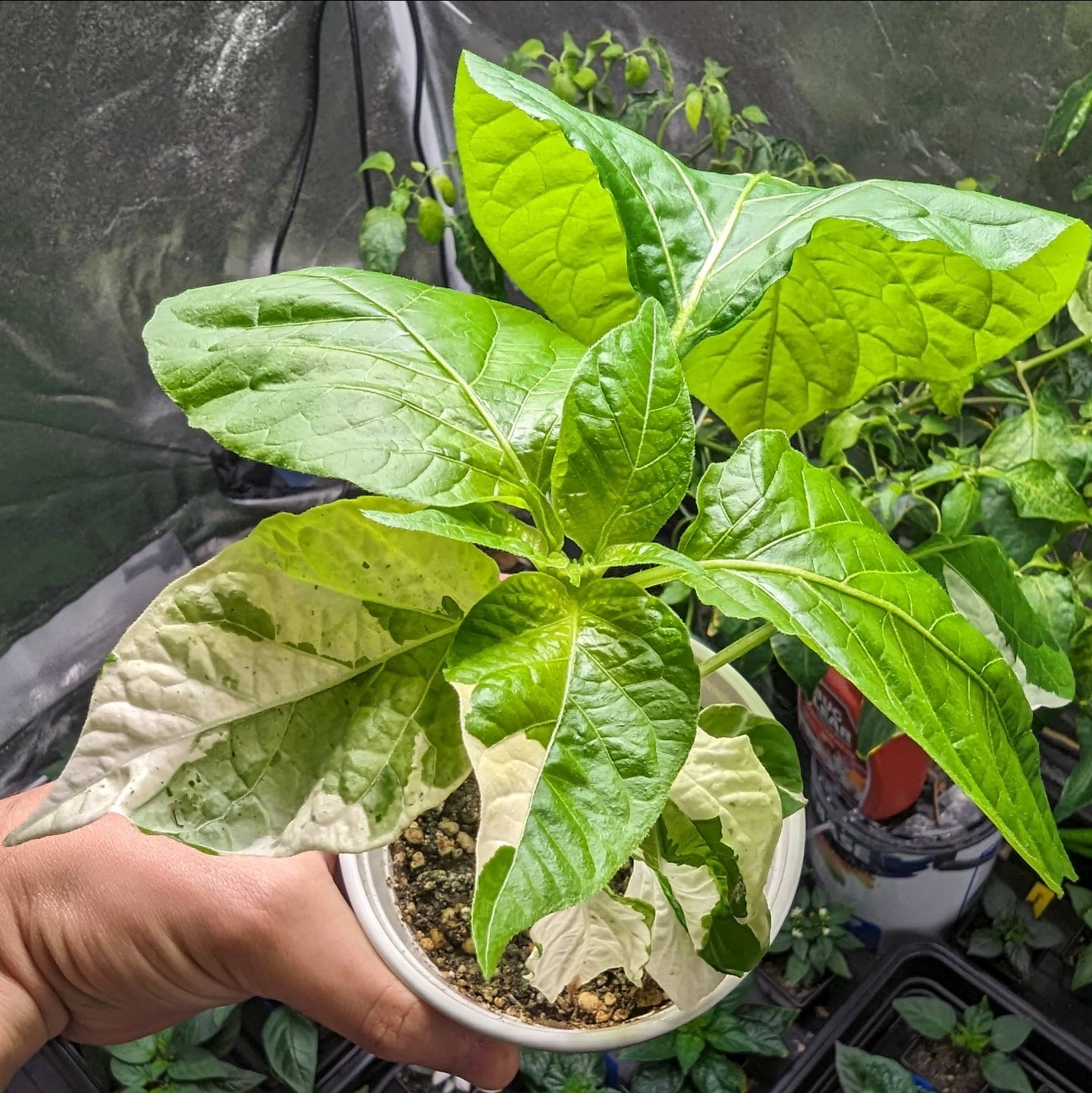
Apical dominance taking over this M2

The full majesty of this M2 which was unfortunately unable to produce flower buds
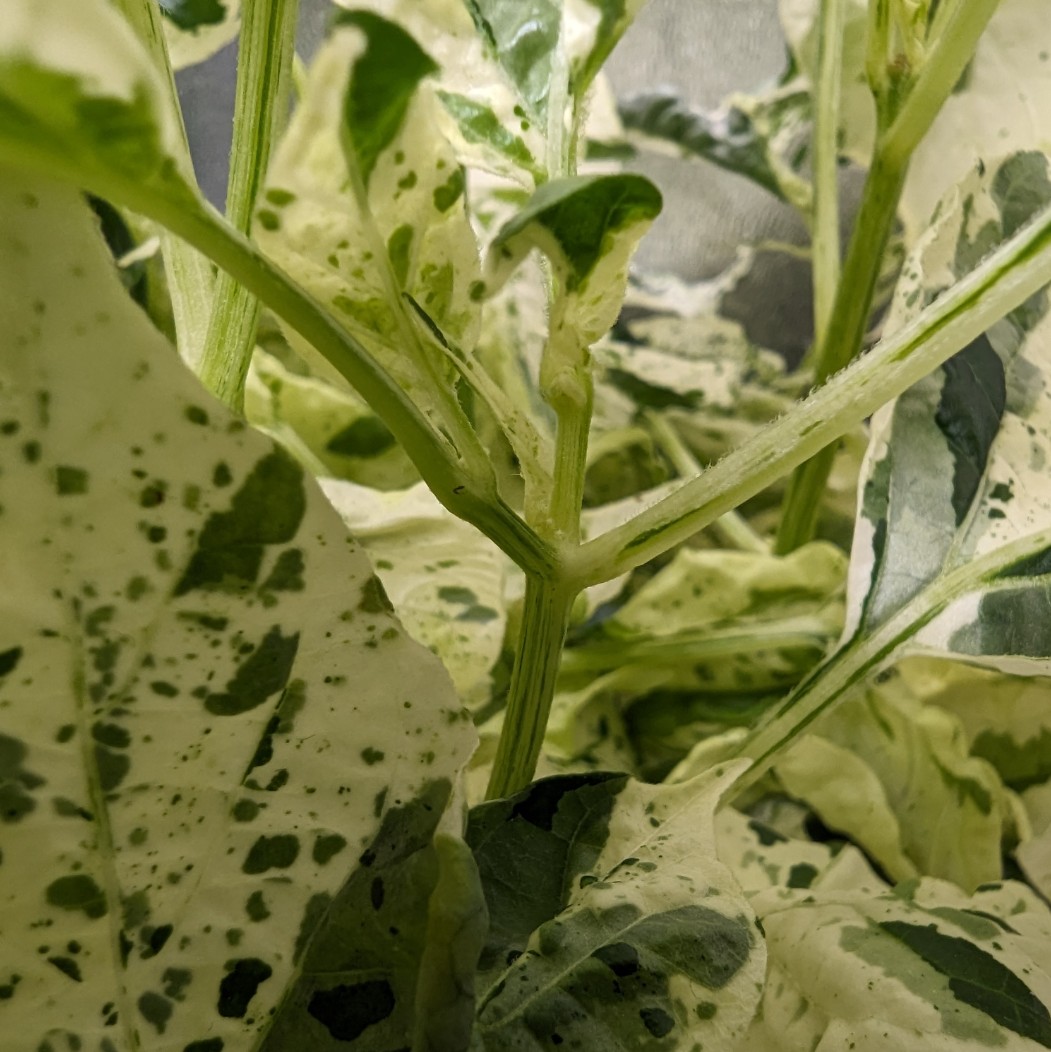
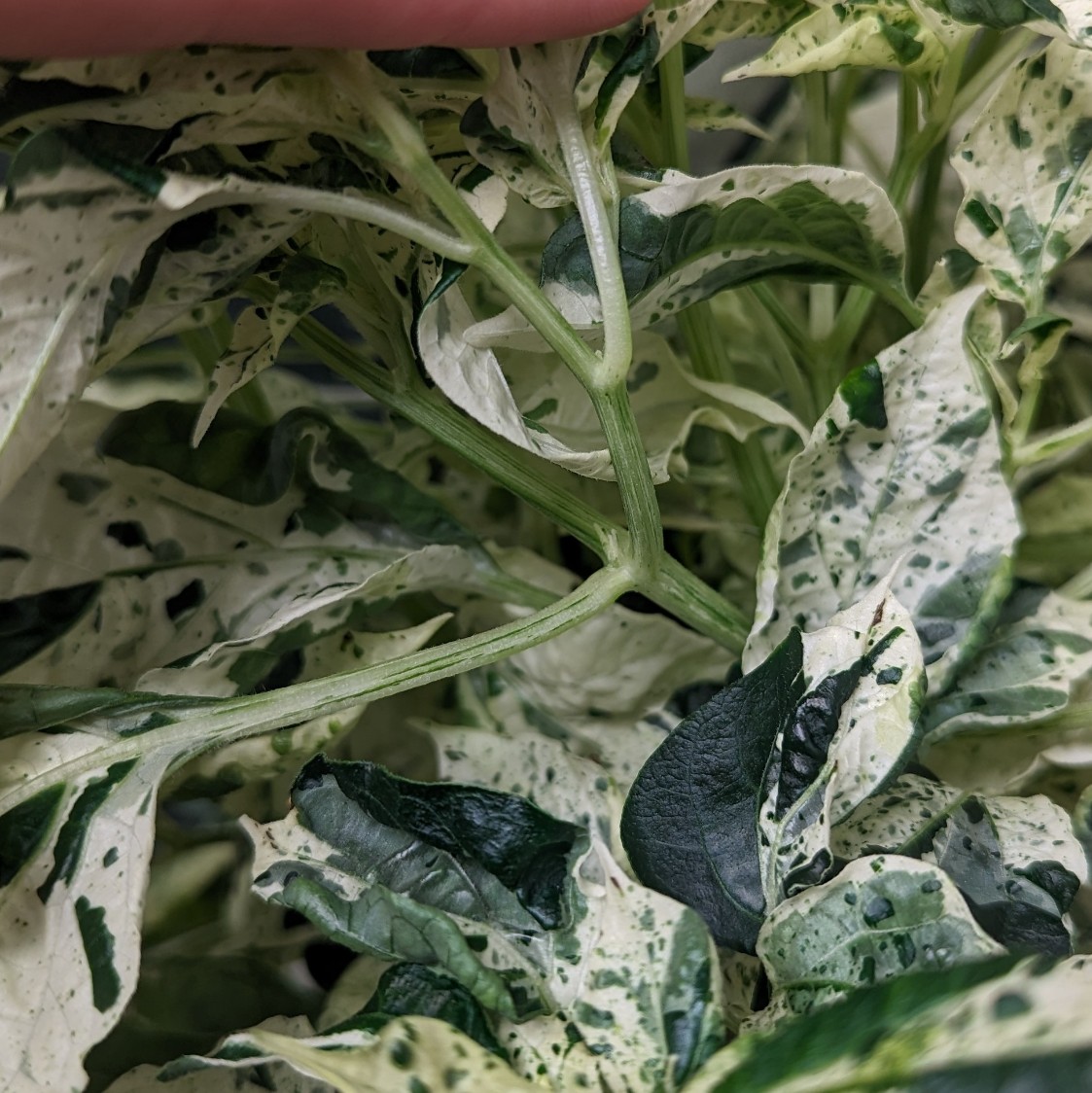
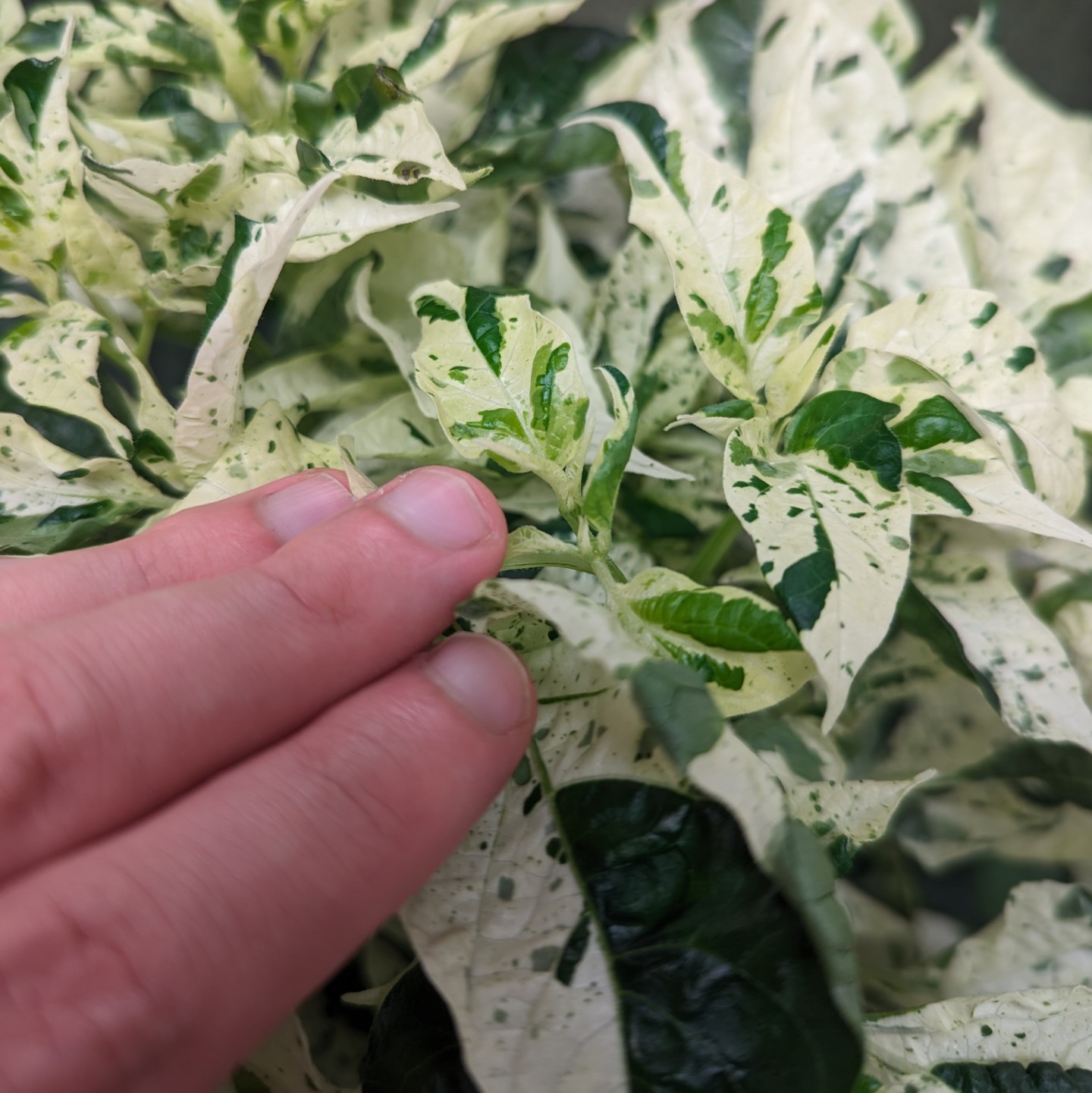
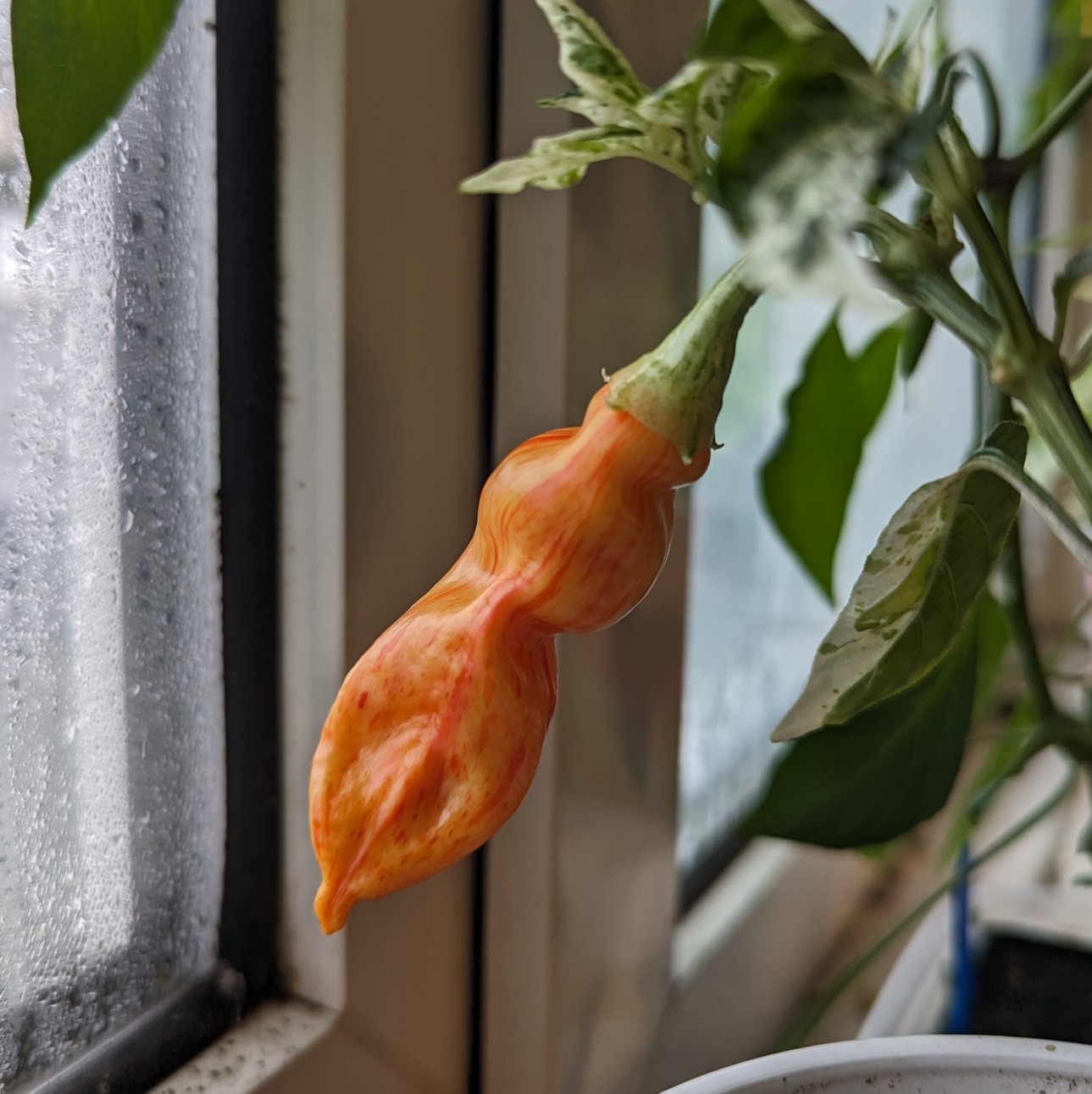
The seeds for M3 were selected from this pod on the variegated branch of the M2
Generation M3
M3 Summary
This generation was started in rockwool cubes shortly after the harvest from the M2 plant. A good 60% of the seedlings were variegated, which meant that there was still work to be done!
A quick winter growout meant that I was able to select one plant early on and collect seeds from this specimen within a record 3.5 months!